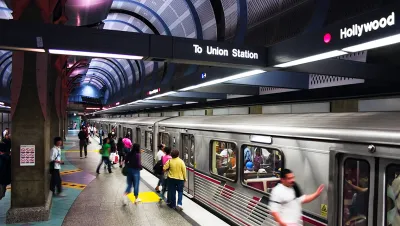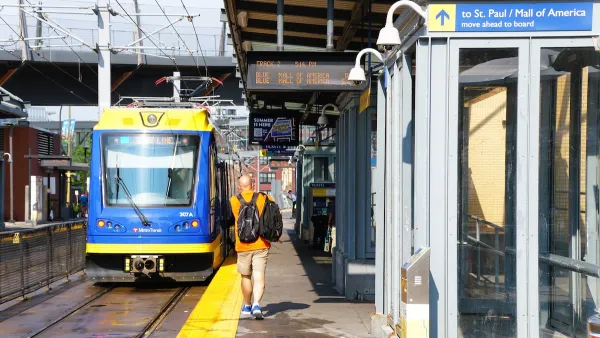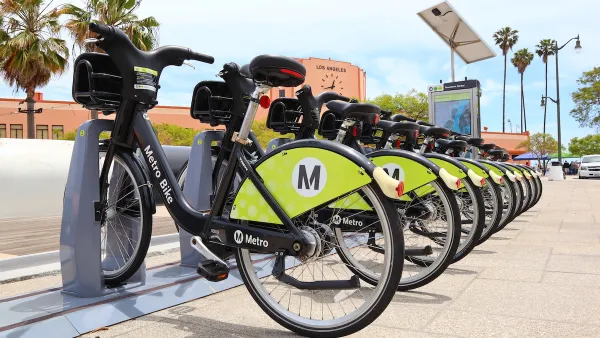Research links high ridership levels with lower crime, signaling that, rather than introducing new security measures, transit agencies should focus on bringing riders back to their systems.

In an opinion piece in the Los Angeles Times, Madeline Brozen urges Los Angeles Metro to look to the system’s buses as a model for how to improve transit safety.
While the agency is deploying added security, transit ambassadors, and other tools such as loud music to deter crime in its stations, Brozen writes that those may not be enough to make trains safer. Yet riders on the system’s buses experience far less crime than train users. “Buses aren’t safer because their rubber tires act like crime-fighting vigilantes. The most likely explanation for why buses are safer is because more people use them.”
“As fewer people rode public transit — particularly the train system — social norms eroded. Behaviors changed from minor issues like passengers putting their feet on seats to more concerning behaviors like smoking cigarettes or openly using drugs.” According to Brozen, “The best way forward is to take lessons from the bus and get more people on board to enforce public transit’s social norms.”
To bring back ridership, Brozen suggests “focusing on rail riders who are not weekday commuters,” a strategy recently undertaken by San Francisco’s Bay Area Rapid Transit Authority (BART). Brozen also recommends activating rail stations, which are often empty and isolated.
Ultimately, “Whatever steps L.A. Metro takes to address crime should be good solutions for transit in general, not just for safety,” and transit can’t solve larger societal problems. But “The bus system’s relationship between more riders and less crime is proof positive” that boosting ridership can be one tool for addressing transit safety.
FULL STORY: Opinion: How can L.A. Metro make train service safer? Look to what’s working on buses

National Parks Layoffs Will Cause Communities to Lose Billions
Thousands of essential park workers were laid off this week, just before the busy spring break season.

Retro-silient?: America’s First “Eco-burb,” The Woodlands Turns 50
A master-planned community north of Houston offers lessons on green infrastructure and resilient design, but falls short of its founder’s lofty affordability and walkability goals.

Delivering for America Plan Will Downgrade Mail Service in at Least 49.5 Percent of Zip Codes
Republican and Democrat lawmakers criticize the plan for its disproportionate negative impact on rural communities.

Test News Post 1
This is a summary

Test News Headline 46
Test for the image on the front page.

Balancing Bombs and Butterflies: How the National Guard Protects a Rare Species
The National Guard at Fort Indiantown Gap uses GIS technology and land management strategies to balance military training with conservation efforts, ensuring the survival of the rare eastern regal fritillary butterfly.
Urban Design for Planners 1: Software Tools
This six-course series explores essential urban design concepts using open source software and equips planners with the tools they need to participate fully in the urban design process.
Planning for Universal Design
Learn the tools for implementing Universal Design in planning regulations.
EMC Planning Group, Inc.
Planetizen
Planetizen
Mpact (formerly Rail~Volution)
Great Falls Development Authority, Inc.
HUDs Office of Policy Development and Research
NYU Wagner Graduate School of Public Service





























